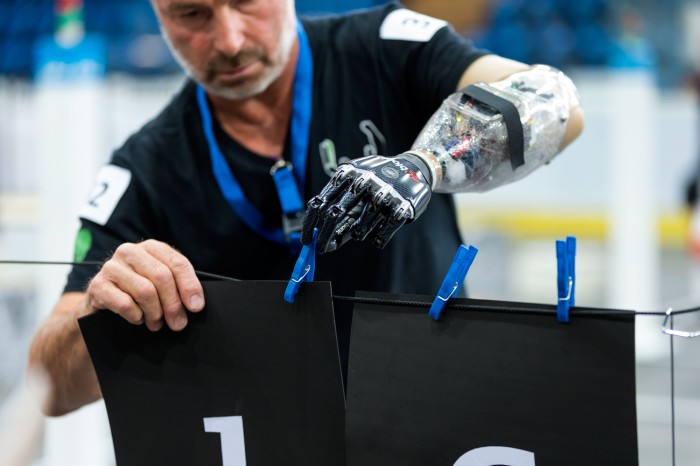First Cyborg Olympics Will Celebrate How Technology Can Help Disabled People
Forget Rio 2016. The hottest live sports ticket of the year for technology lovers will be the first cyborg Olympics in Zurich this October.
Bringing together as many as 80 research groups from 25 different countries, scientists and engineers at the Cybathlon will equip competitors—referred to as pilots—with the latest hardware designed to make the lives of disabled people easier.
As Nature explains in a long feature about the event, its organizer, biomedical engineer Robert Riener, initially planned to create a spectacle in which technologists could show off how advanced prosthetics could be used to tackle extreme challenges. But that was until he realized that simple everyday tasks can be charged with far more emotion for those who have to use prostheses.

So the event will be less of a celebration of feats of strength and endurance than the actual Olympics, and instead focus on how these technologies can be used in the real world. A prosthetic leg race will test, among other things, the pilot’s ability to sit down and stand up. Part of the prosthetic arm event will be a race to hang out laundry. And one event won’t even feature any movement whatsoever, because the brain–computer interface competition will see pilots guiding a video game character using only their thoughts.
The event would have been impossible a few years ago. But recently these technologies have matured. Last year, doctors successfully bridged a man’s spinal injury with electronics, allowing signals from his brain to be re-routed via computer, ultimately moving his arm. A robotic exoskeleton made by SuitX may cost $40,000, but it can help disabled people to walk. And a robotic hand can even provide sensory feedback to discern between textures, such as ball bearings and sandpaper.
Competition at the Cybathlon, then, looks set to be fierce.
(Read more: Nature, “The Body Electric,” “A Robotic Hand, This Time with Feeling,” “This $40,000 Robotic Exoskeleton Lets the Paralyzed Walk,” “Paralyzed Man’s Arm Wired to Receive Brain Signals”)
Keep Reading
Most Popular
Large language models can do jaw-dropping things. But nobody knows exactly why.
And that's a problem. Figuring it out is one of the biggest scientific puzzles of our time and a crucial step towards controlling more powerful future models.
The problem with plug-in hybrids? Their drivers.
Plug-in hybrids are often sold as a transition to EVs, but new data from Europe shows we’re still underestimating the emissions they produce.
Google DeepMind’s new generative model makes Super Mario–like games from scratch
Genie learns how to control games by watching hours and hours of video. It could help train next-gen robots too.
How scientists traced a mysterious covid case back to six toilets
When wastewater surveillance turns into a hunt for a single infected individual, the ethics get tricky.
Stay connected
Get the latest updates from
MIT Technology Review
Discover special offers, top stories, upcoming events, and more.